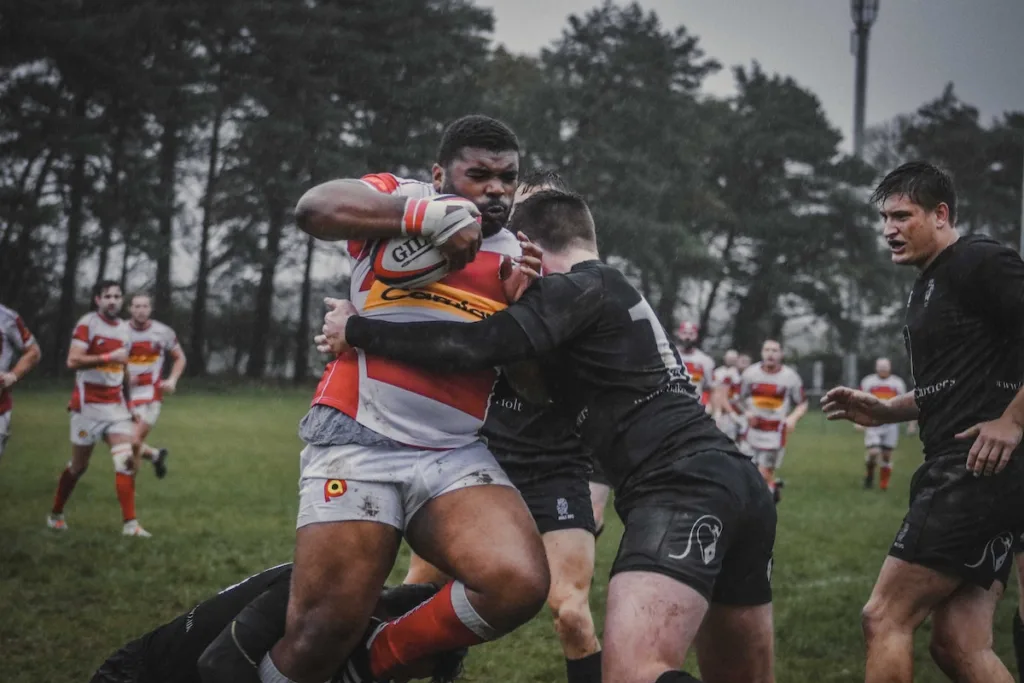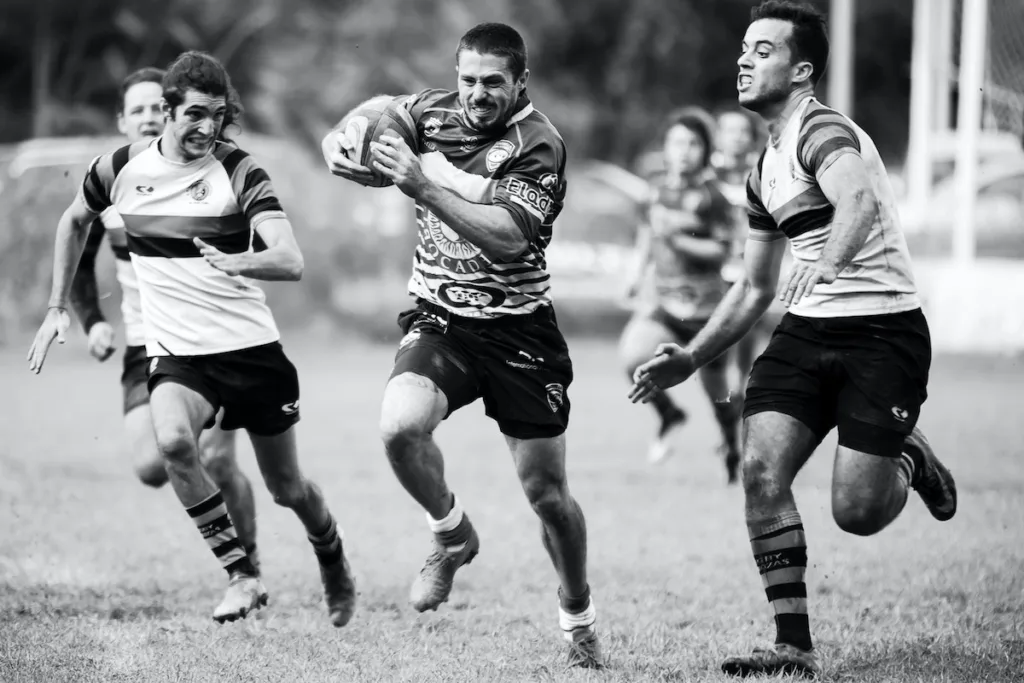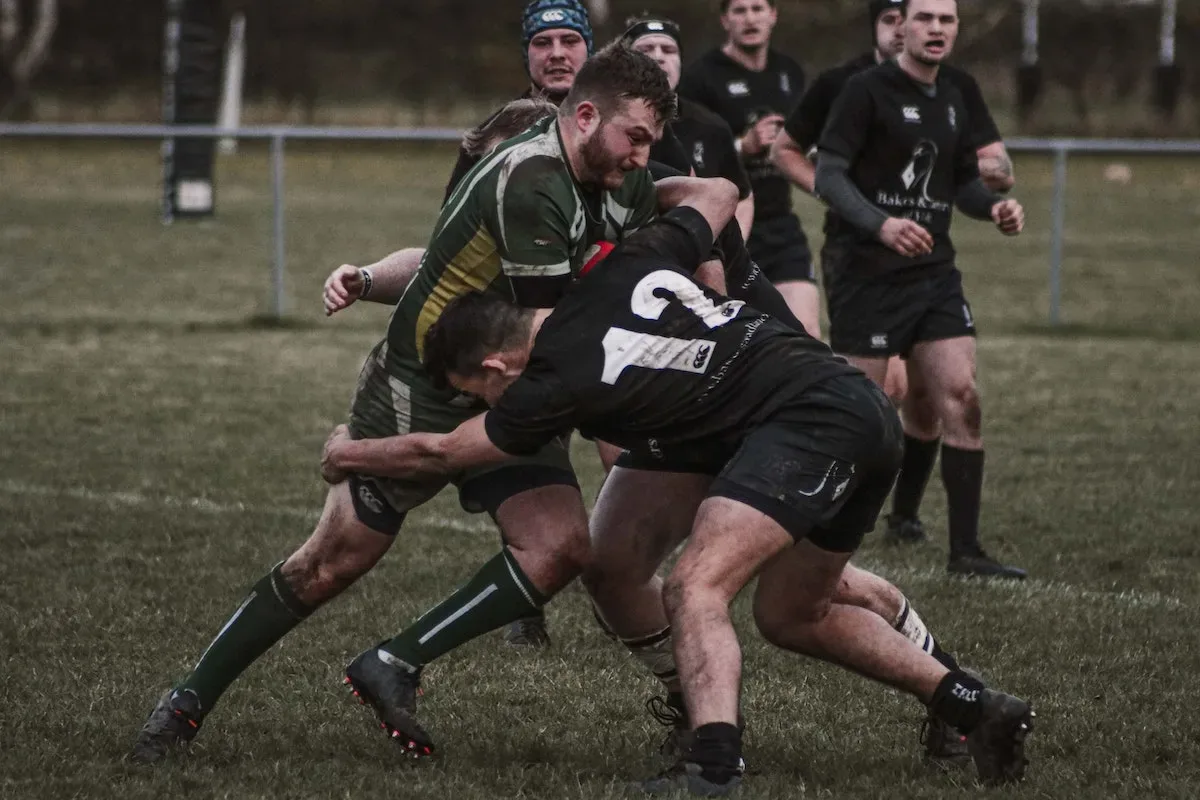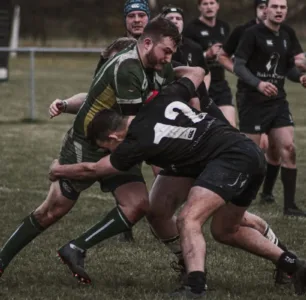Rugby is a sport that demands strength, speed, and skill from all players on the field. But in every team, there are certain positions that play a more crucial role than others. One of these positions is the rugby centre. These players are the backbone of any team, linking the forwards and backs and providing the vital connection between attack and defence.
So, what exactly is a rugby centre and what role do they play in the game? Let’s take a closer look.
The role of rugby centres
Rugby centres are positioned in the midfield, between the forwards and backs. They are responsible for linking the two and making sure that the ball moves seamlessly from one group to the other. This means that they need to be comfortable playing both attacking and defensive roles, as they will be required to do both.
In attack, centres are responsible for creating opportunities for their team by running strong lines, breaking tackles, and making offloads to other players. They also need to be able to kick accurately and make intelligent decisions about when to pass, run, or kick.
Defensively, centres need to be able to read the game and anticipate the opposition’s moves. They need to be strong in the tackle and able to disrupt the opposition’s attacking play. They also need to be able to communicate well with their fellow defenders, directing them to cover any gaps and make tackles.
Skills required for rugby centres
To play the role of rugby centre effectively, there are certain skills that are essential. These include:
- Speed: Rugby centres need to be able to cover a lot of ground quickly, both in attack and defence.
- Agility: The ability to change direction quickly is important for evading defenders and making tackles.
- Strength: Rugby centres need to be strong enough to break tackles and hold their own in contact.
- Ball handling: Good ball handling skills are essential for making accurate passes and offloads.
- Kicking: Rugby centres need to be able to kick accurately, both in open play and for goal kicking.

Why rugby centres are so important
Rugby centres are often referred to as the ‘glue’ that holds the team together. They are the link between the forwards and backs and play a crucial role in setting up attacking moves and disrupting the opposition’s play. Without strong centres, a team will struggle to create opportunities and defend effectively.
In summary, rugby centres play a vital role in every rugby team’s success. They need to be fast, strong, and skilled, with the ability to play both attacking and defensive roles. If you’re a rugby player or enthusiast, make sure you appreciate the hard work and dedication that goes into playing this crucial position.
What’s the difference between inside and outside centres
In rugby, the inside and outside centres are both positioned in the midfield, but they play different roles.
The inside centre (or “12”) typically wears the number 12 jersey and is positioned closer to the forwards. They are often the bigger of the two centres and are responsible for making hard, direct runs with the ball, as well as crashing through the defensive line to gain ground. Inside centres also play a key role in the team’s defence, often making big tackles and disrupting the opposition’s attacking play.
The outside centre (or “13”) typically wears the number 13 jersey and is positioned closer to the backs. They are often the faster and more agile of the two centres, and are responsible for running creative lines and creating opportunities for the outside backs. Outside centres are also strong in defence and are responsible for shutting down the opposition’s attacks on the outside.
Overall, the main difference between inside and outside centres is their physical attributes and the specific roles they play within the team. While both are important to the team’s success, they each bring different skills and strengths to the game.
The attacking responsibilities of centres
In rugby, the centres play a crucial role in the team’s attacking strategy. The inside and outside centres work together to create opportunities for the team to score points and move the ball forward on the field.
Here are some of the attacking responsibilities of rugby centres:
- Making runs: Centres are responsible for making runs with the ball, running hard and fast to break through the defensive line and create openings for their team. The inside centre typically makes direct, hard runs through the middle of the field, while the outside centre will look for gaps and openings on the outside.
- Distributing the ball: Centres also need to be able to distribute the ball to their teammates effectively. They should be able to pass accurately and quickly, making sure that the ball reaches the right player at the right time.
- Offloading: Offloading the ball is another important skill for centres. When tackled, they need to be able to offload the ball to a teammate quickly to keep the attacking momentum going.
- Kicking: Centres also need to be able to kick the ball effectively, both in open play and for goal kicking. They may be required to kick the ball downfield to gain ground, or to put up high kicks to put pressure on the opposition’s defence.
- Creating opportunities: The centres are responsible for creating opportunities for their teammates to score. This can be done through making runs, offloading the ball, and creating gaps in the opposition’s defence.
Overall, the attacking responsibilities of rugby centres are crucial to the team’s success. They need to be versatile, able to run hard, pass accurately, and create opportunities for their teammates to score. With their skills and speed, centres are a key part of any attacking strategy.
The defensive roles of a centre
In rugby, the centres also play a crucial role in the team’s defence. They are responsible for shutting down the opposition’s attacking plays, preventing them from making ground and scoring points. Here are some of the defensive roles of a centre:
- Tackling: Centres need to be strong in the tackle, as they are often the first line of defence. They should be able to make big hits and bring down the opposition’s players quickly and effectively.
- Marking: Centres also need to be good at marking their opposite number. They should be able to read the game and anticipate the opposition’s moves, positioning themselves in the right place to make tackles and intercept passes.
- Covering: When the opposition’s players make breaks, the centres need to be able to provide cover for their teammates. They should be able to track back quickly and make tackles to prevent the opposition from scoring.
- Communication: Good communication is key to a strong defence, and centres play a key role in this. They should be able to communicate effectively with their teammates, directing them to cover any gaps and make tackles when needed.
- Disrupting the opposition: Centres can also disrupt the opposition’s attacking play by putting pressure on their players, making tackles and intercepting passes. They should be able to read the game and anticipate the opposition’s moves, making it difficult for them to gain ground and score points.
Overall, the defensive roles of a centre are just as important as their attacking roles. They need to be strong in the tackle, good at marking their opposite number, and able to communicate effectively with their teammates. With their speed and agility, centres are a key part of any team’s defence.

How can I become a better centre
If you’re looking to become a better centre in rugby, here are some tips to help you improve:
- Work on your fitness: Centres need to be fast, agile, and have good endurance to keep up with the pace of the game. Regular cardio and strength training exercises can help you improve your fitness and agility.
- Improve your ball-handling skills: Centres need to be comfortable handling the ball, passing accurately, and offloading the ball in tight spaces. Practising your ball-handling skills, both alone and with teammates, can help you improve in this area.
- Watch professional players: Watch professional rugby games and pay attention to the way centres play. Observe their positioning, decision-making, and tackling techniques. This can help you gain a better understanding of the role and how to perform it effectively.
- Practise your tackling: Tackling is a crucial part of the centre’s defensive role. Practising your tackling technique regularly, both alone and with teammates, can help you become more effective in this area.
- Improve your communication: Good communication is key to a strong defence. Work on improving your communication skills, both on and off the field, so that you can direct your teammates effectively.
- Play to your strengths: Every centre is different, and you should play to your own strengths. If you’re faster and more agile, focus on making breaks and creating gaps in the opposition’s defence. If you’re stronger, focus on making hard, direct runs and breaking through tackles.
Overall, becoming a better centre in rugby takes practice, dedication, and hard work. By focusing on your fitness, ball-handling, tackling, communication, and playing to your strengths, you can improve your game and become a key player in your team.
Notable female centres
There have been many notable female centres who have made significant contributions to rugby. Here are a few:
- Emily Scarratt – Scarratt is a versatile player who has played both inside and outside centre for the England national team. She is known for her powerful running and strong defence, and has played a key role in England’s recent success in international rugby.
- Portia Woodman – Woodman is a New Zealand rugby sevens player who has also played at centre in the fifteen-a-side game. She is known for her speed and agility, and has scored many tries in both codes of the game.
- Kelly Brazier – Brazier is a New Zealand rugby sevens player who has also played at centre in the fifteen-a-side game. She is known for her speed and skill, and has been a key player for the New Zealand women’s team in both codes of the game.
- Kendra Cocksedge – Cocksedge is a New Zealand rugby player who has played both scrum-half and centre. She is known for her speed, skill, and ability to create opportunities for her teammates, and has been a key player for the New Zealand women’s team for many years.
- Carla Hohepa – Hohepa is a New Zealand rugby player who has played both centre and fullback. She is known for her speed, agility, and strong defence, and has been a key player for the New Zealand women’s team for many years.
These are just a few of the many talented female centres who have made their mark on rugby. Their skill, dedication, and hard work have helped to raise the profile of women’s rugby and inspire a new generation of players.
Notable Irish female centres
There have been several notable female centres who have played for the Ireland national rugby union team. Here are a few:
- Lynne Cantwell – Cantwell played for the Ireland women’s team from 2005 to 2014, earning 73 caps in total. She played primarily at inside centre, and was known for her hard running and strong defence. Cantwell was part of the Ireland team that won the Six Nations Grand Slam in 2013.
- Jenny Murphy – Murphy played for the Ireland women’s team from 2013 to 2018, earning 28 caps in total. She played primarily at outside centre, and was known for her speed and agility. Murphy was part of the Ireland team that reached the semi-finals of the 2014 Women’s Rugby World Cup.
- Alison Miller – Miller played for the Ireland women’s team from 2010 to 2018, earning 47 caps in total. She played primarily on the wing, but also played at centre during her career. Miller was known for her speed and finishing ability, and scored several important tries for Ireland during her career.
- Sene Naoupu – Naoupu has played for the Ireland women’s team since 2015, earning over 30 caps in total. She has played primarily at inside centre, and is known for her power and ability to break tackles. Naoupu has also played for the Barbarians women’s team, and was named the Women’s Six Nations Player of the Championship in 2017.
These are just a few of the many talented female centres who have played for the Ireland women’s team. Their skill, dedication, and hard work have helped to grow the sport of rugby in Ireland and inspire a new generation of players.

